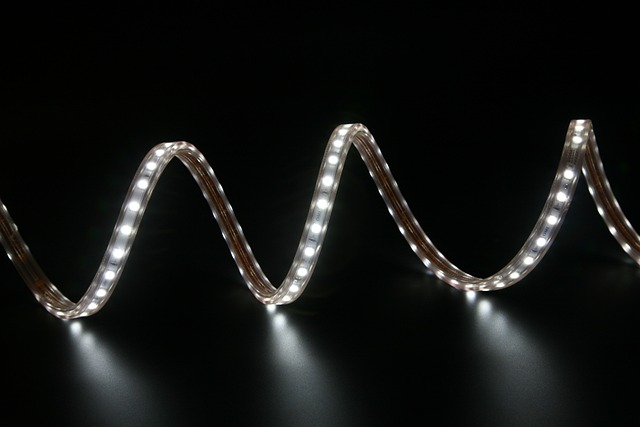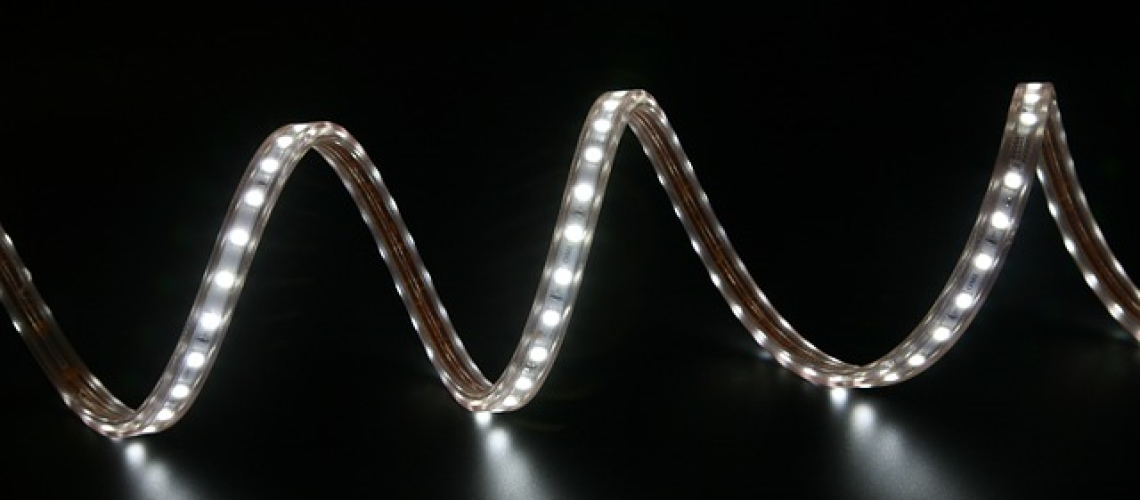Meta Description
Looking for an all-inclusive resource on LED driver integrated circuits technology? This article provides a complete guide to LED drivers, covering all the essential information you need.
Introduction
LED drivers are electronic devices that are essential for operating LED lights. They regulate the current and voltage supplied to the LED, ensuring it operates within its specified range. LED drivers also provide features like dimming control, thermal protection, and compatibility with various LED lighting systems.
In this day and age, LED lighting has become increasingly popular due to its energy efficiency and longevity, and LED drivers have played a significant role in making this possible. LED drivers can be categorized into constant, alternating current, voltage, isolated, and non-isolated. Selecting the right one depends on the specific requirements of the lighting system.
This article offers an extensive guide to LED driver integrated circuits technology, including essential details such as their characteristics, various types, practical applications, and potential advancements.
What are LED Driver Integrated Circuits Technology
LED driver integrated circuits (ICs) are electronic components that provide power and control to LED lighting systems. They convert high-voltage AC or DC energy into a lower, regulated voltage or current suitable for driving LEDs.
These ICs are designed to ensure that the LED operates within its safe operating range while also providing precise control over the brightness of the LED. The primary function of an LED driver IC is to regulate the current or voltage supplied to the LED.

Key Features of LED Driver ICs
LED driver ICs are designed to provide a constant current or voltage to LED devices, ensuring they operate within their safe operating ranges. Some of the critical features of LED driver ICs include the following:
High Efficiency
LED driver ICs are highly efficient, with some models achieving up to 98% efficiency. They waste very little power, making them ideal for energy-efficient lighting applications.
Dimming Capability
LED driver ICs can be easily dimmed using pulse width modulation (PWM) or analogue dimming techniques. This allows control of the brightness of LED lighting systems.
Overload and Over-Temperature Protection
LED driver ICs have built-in protection circuits that prevent them from overheating or overloading. This ensures that LED devices remain safe and reliable.
Types of LED Driver ICs
LED driver integrated circuits (ICs) are available in different types, each designed for specific applications. In addition to linear, switching, and boost LED driver ICs, other LED driver ICs offer additional features and benefits. Some of the common types of LED driver ICs are:
Buck LED Driver ICs:
Buck LED driver ICs are switching regulators that step down the voltage supplied to the LED. They are designed to provide efficient power to LEDs that require a constant current, making them ideal for various applications. Buck LED driver ICs are commonly used in LED bulbs, strips, and downlights.
Boost/Buck LED Driver ICs:
Boost/Buck LED driver ICs are switching regulators that can either step up or down the voltage supplied to the LED, depending on the input voltage. These ICs are versatile and can be used in various applications requiring constant current. Boost/Buck LED driver ICs are commonly used in automotive, street, and high-bay lighting.
Dimmable LED Driver ICs:
Dimmable LED driver ICs are designed to provide precise control over the brightness of the LED. They can dim the LED to deficient levels without flickering or other issues. Dimmable LED driver ICs are commonly used in residential and commercial lighting applications, such as recessed, track, and pendant lighting.
Programmable LED Driver ICs:
Programmable LED driver ICs allow the user to program the LED driver to a specific current or voltage. They offer flexibility and customization, making them ideal for applications requiring particular lighting. Programmable LED driver ICs are commonly used in stage lighting, signage, and architectural lighting.
Constant Voltage LED Driver ICs:
Constant or constant voltage LED drivers and integrated driver ICs provide a continuous voltage to the LED, allowing it to operate at its optimal voltage range. They are commonly used in applications requiring a specific voltage, such as backlighting for LCD screens, keypads, and displays.
Working of LED Drivers
The primary function of an LED driver is to regulate the electrical current supplied to the LED. An LED lighting fixture is powered by a self-contained power supply incorporating a constant voltage driver and an LED driver IC. A current-limiting resistor is connected in series to safeguard the LED from excess current.
The system employs low voltage and AC LED drivers to provide efficient power to the light-emitting diodes while ensuring a stable output voltage. LED drivers typically operate in two modes: constant or two constant currents vs. voltage drivers.
Constant Current Mode:
In constant current mode, the LED driver maintains a constant current through the LED while the voltage can vary. This mode is typically used when the LED requires a specific amount of current to operate correctly, regardless of the voltage supplied. The driver adjusts the voltage to maintain the constant current level, even if the input voltage varies.
Constant Voltage Mode:
In constant voltage mode, the LED driver maintains a constant voltage across the LED while the current can vary. This mode is typically used when the LED requires a specific voltage to operate correctly, regardless of the current supplied. The driver adjusts the voltage drop of the current to maintain the constant voltage level, even if the input current varies.
LED drivers can also include dimming functionality, which allows the brightness of the LED to be adjusted. Dimming can be achieved using various methods, including pulse width modulation (PWM) and analogue voltage dimming.
PWM dimming works by rapidly turning the LED on and off at a high frequency, with the duty cycle (ratio of on-time to off-time) determining the brightness of the LED. The driver adjusts the duty cycle of the PWM signal to achieve the desired brightness level.
Analog voltage dimming works by varying the voltage supplied to the LED, with the voltage level determining the brightness of light output from the LED. The driver adjusts the voltage for light fixtures to achieve the desired brightness level.
In addition to regulating the current and voltage supplied to the LED, LED drivers protect against overvoltage, overcurrent, and overheating conditions. These protection features help ensure the LED’s and driver’s safety and longevity.
Applications of LED Driver ICs:
LED driver ICs are used in a wide range of applications, including:
General Lighting
LED driver ICs are commonly used in available lighting applications, such as residential and commercial lighting. They provide a constant current or voltage to LED devices, ensuring they operate efficiently and reliably.
Automotive Lighting
LED driver ICs are widely used in automotive lighting applications, such as headlights, taillights, and interior lighting. They provide efficient and reliable power to LED light devices, ensuring they operate safely and reliably.
Industrial Lighting
LED driver ICs are used in various industrial lightings applications, such as warehouse, street, and high-bay lighting. They provide efficient and reliable power to LED devices, ensuring they operate safely and efficiently.
Backlighting
LED driver ICs, such as LCD screens and keypads, are used in backlighting applications. They provide efficient and precise control over the brightness of the backlight, ensuring that it is consistent and easy to read.

Advantages of LED Driver ICs:
Efficient
LED driver ICs are designed to provide efficient power to LEDs, reducing the total power lost as heat. This efficiency translates into energy savings and longer life for the LED.
Precise Control
LED driver ICs offer precise control over the current and voltage supplied to the LED, allowing optimal performance and longer life.
Flexibility
LED driver ICs are available in different types and configurations, allowing designers to choose the suitable IC for the led requirements of the application. This flexibility enables designers to create custom lighting solutions that meet specific requirements.
Protection
LED driver ICs have built-in protection features, such as overvoltage, overcurrent, and overtemperature protection. These features protect the LED and the driver IC from damage due to unexpected events or operating conditions.
Compatibility
LED driver ICs are designed to work with a wide range of input voltages and currents, making them compatible with various power sources and LED types.
Disadvantages of LED Driver ICs:
Complexity
LED driver ICs can be complex and require specialized knowledge to design and implement. This can increase the cost and time needed to develop LED lighting solutions.
Cost
LED driver ICs, particularly for high-end or specialized applications, can be expensive. This cost can be a significant barrier to entry for some applications.
Size
LED driver ICs can be large and require additional circuitry, increasing the size and complexity of the overall system.
Noise
LED driver ICs can produce noise or interference, mainly if not adequately designed or shielded. This can cause issues with other electronic devices or systems.
Selection Criteria for LED Drivers
Selecting the right LED driver is crucial for ensuring optimal performance and longevity of the LED lighting system. Several key factors should be considered when selecting an LED driver; the above example includes:
Current and Voltage Requirements
LED drivers are available in a range of current and voltage ratings. Choosing an LED driver that can provide the required current and voltage to the LED is essential. Selecting a driver that offers too little or too much current or voltage can lead to premature failure of the LED.
Dimming Capability
Choosing an LED driver compatible with the desired dimming method is essential if the application requires dimming capability. Several dimming methods exist, including pulse-width modulation (PWM), analogue, and digital dimming. Choosing an LED driver incompatible with the desired dimming method can result in flickering or other issues.
Efficiency
LED drivers vary in efficiency and the percentage of power delivered to the LED. Choosing a highly efficient LED driver can lead to energy savings, more power, and longer life for the LED.
Size and Form Factor
The size and form factor of the LED driver should be considered to ensure that it can fit within the desired space and be easily integrated into the overall system.
Protection Features
LED drivers should have built-in protection features, such as overvoltage, overcurrent, and overtemperature protection. These features protect the LED and the driver from damage due to unexpected events or operating conditions.
Compatibility
LED drivers should be compatible with the LED type being used. Different LED types have additional current and voltage requirements, so choosing an LED driver specifically designed for the LED type is essential.
Cost
LED drivers vary in cost, and it is essential to choose a driver that fits within the budget for the project. However, price should be one of many considerations when selecting an LED driver, as choosing a low-quality driver can lead to premature failure of the LED and increased costs in the long run.
When Does an LED Driver Become Necessary?
An LED driver becomes necessary when the LED needs to be powered by a constant current or a higher voltage source different from the input power source. This is because LEDs are designed to operate on low voltage and low current levels, separate from the standard AC power source supplied by the electrical grid.
Some everyday situations where an LED driver becomes necessary are:
High-power LED applications:
In high-power LED applications, an LED driver must provide a constant current to the LED to ensure efficient and consistent operation.
Multiple LED installations:
In installations with multiple LEDs, an LED driver must ensure that all the LEDs receive the same current and voltage. This helps prevent uneven lighting and premature failure of the LEDs.
Voltage regulation:
In applications where the input voltage is not regulated or fluctuates, an LED driver circuit must provide a constant voltage to the LED, ensuring consistent performance and longevity.
Dimming control:
An LED driver with dimming capabilities becomes necessary in applications requiring dimming control. This allows the LED to be dimmed to different levels while maintaining a constant current or voltage.
Environmental factors:
In environments with high temperature, humidity, or other challenging conditions, an LED driver becomes necessary to protect the individual LEDs from damage and ensure reliable operation.
LED Driver Troubleshooting
Like any electronic device, LED Drivers can sometimes encounter problems. Here are some common LED driver troubleshooting tips:
Check the Power Supply:
Check the input voltage and ensure it matches the LED driver’s specified range. If the input voltage is outside the led driver circuit selected range, it can cause the LED driver to malfunction.
Check the Wiring:
Check the wiring connections between the LED driver and the LED. Ensure the wiring is correctly connected and there are no loose connections or short circuits.
Check for Overheating:
Overheating can cause LED display drivers to malfunction. Ensure that the LED driver is not overheating and there is adequate ventilation to prevent overheating.
Check for Output Voltage:
Check the output voltage of the LED driver using a multimeter. If the output voltage is too low or too high, it can cause the LED to malfunction or fail.
Check for Output Current:
Check the output current of the LED driver using a multimeter. If the output current is too low or too high, it can cause the LED to malfunction or fail.
Check for Faults:
Check the LED driver for faults, such as blown fuses, damaged components, or burnt-out internal circuitry. Replace the faulty parts or the entire LED driver if any defects are found.
Check for Compatibility:
Ensure the LED driver is compatible with the LED and the lighting system. An incompatible LED driver can cause the LED system to malfunction or fail.
Frequently Asked Questions
How long do LED drivers last?
The lifespan of an LED driver depends on various factors, including the quality of the components, the operating temperature, and the workload. Typically, a good-quality LED driver can last up to 50,000 hours or more, but poor-quality LED drivers may fail after just a few thousand hours of use.
Do LED drivers and transformers refer to the same thing?
No, an LED driver is not the same as a transformer. While both devices can step down voltage, an LED driver regulates the output current to the LED, whereas a transformer only changes the voltage level.
LED drivers are more complex than transformers, as they include additional circuitry to ensure a constant current output and may include other features like dimming control and thermal protection.
Can you use an LED driver as a power supply?
In some cases, an LED driver can be used as a power supply, but it depends on the specific LED driver model and the requirements of the load.
LED drivers are designed to provide a constant current output, whereas power supplies give a consistent voltage output. So, an LED driver may not be suitable if the load requires a regular current-led driver or continuous voltage.
How can you connect an LED driver to power?
To connect an LED driver to power, first, ensure that the input voltage matches the specified range for the LED driver. Next, click the input terminals of the LED driver to the power source, ensuring that the polarity is correct. Finally, connect the output terminals of the power factor from the LED driver to the LED, ensuring that the wiring is right and secure.
What is the difference between the LED driver and the power supply?
The main difference between an LED driver and a power supply is the output regulation. LED drivers regulate the direct current output to the LED, while power supplies regulate the output voltage. LED drivers are designed to provide a constant current work, whereas power supplies provide a continuous voltage output.
LED drivers may also include additional features like dimming control and thermal protection, not typically found in power supplies.
Conclusion
In conclusion, LED drivers are critical in operating LED lighting systems. They provide the necessary regulation for current and voltage to ensure that LEDs operate efficiently and within their specified range.
With their ability to provide features like dimming control, thermal protection, and compatibility with various types of LED lighting, LED drivers have helped make LED lighting more popular due to their energy efficiency and longevity.
In summary, LED drivers play a crucial role in the success of LED lighting systems and will continue to be an essential electronic component in the future of lighting technology.

